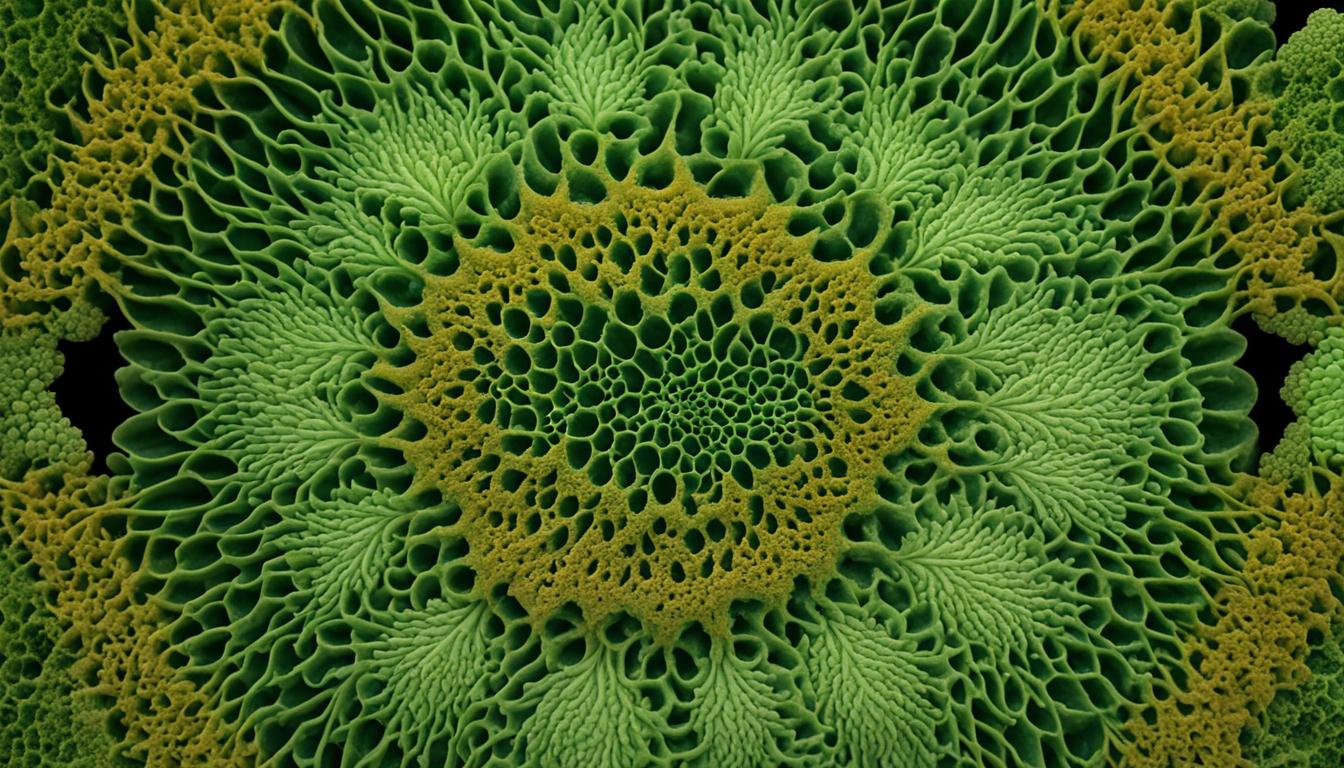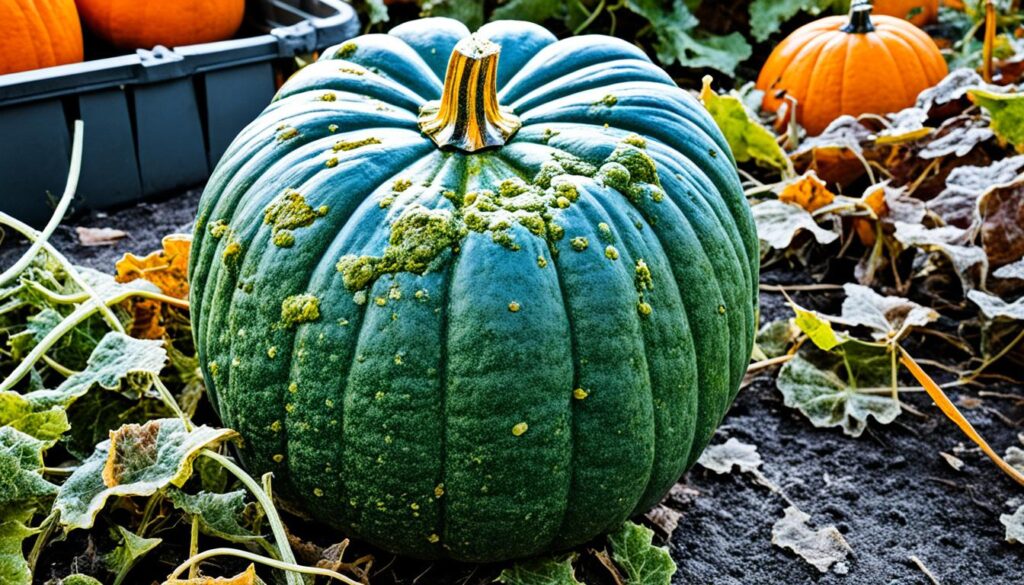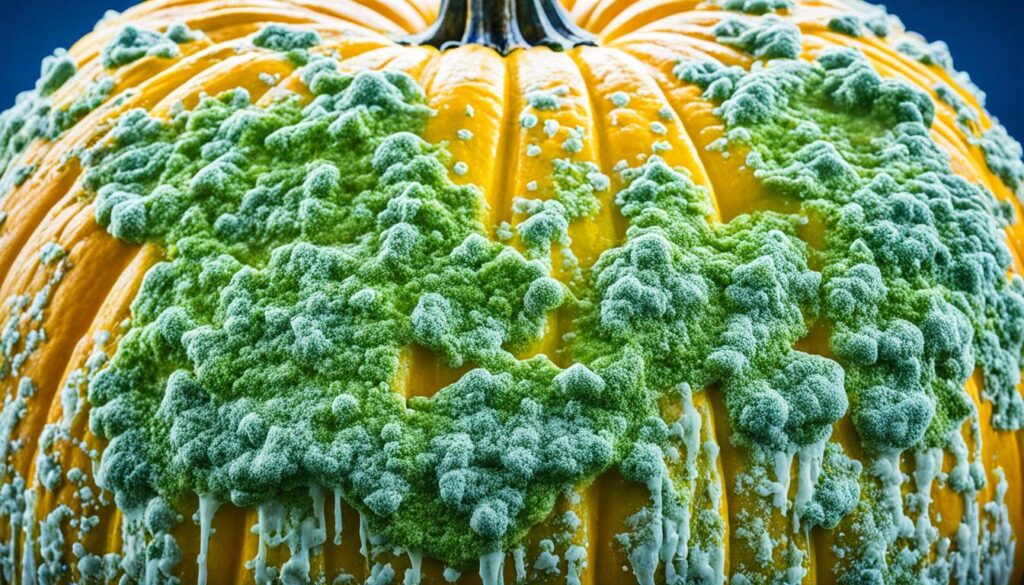
Innovative Techniques for Mold on pumpkin
Welcome to our guide on innovative techniques for addressing mold on pumpkins. As autumn approaches, many of us look forward to decorating our homes with vibrant pumpkins, creating a festive atmosphere. However, mold can quickly become a concern, causing our beautiful decorations to deteriorate and lose their appeal.
In this section, we will explore effective strategies to combat mold growth on pumpkins, allowing you to maintain fresh and stunning autumn decor throughout the season. With these innovative techniques, you can ensure that your pumpkins stay mold-free and continue to enhance the visual appeal of your surroundings.
Key Takeaways
- Understanding the causes of mold growth on pumpkins can help you prevent it.
- Regularly inspecting your pumpkins and quickly addressing any signs of mold is essential.
- Proper ventilation and storage conditions can significantly reduce the risk of mold development.
- Using natural remedies, such as a vinegar solution or essential oils, can inhibit mold growth.
- Applying a protective sealant or wax can help preserve the freshness and appearance of your pumpkins.
Understanding and Preventing Mold Growth on Pumpkins
Mold growth on pumpkins can quickly turn your vibrant autumn decor into a fuzzy and unsightly mess. To prevent this issue, it’s essential to understand the factors that contribute to mold growth and take proactive measures to keep your pumpkins mold-free.
One of the primary causes of mold growth on pumpkins is excess moisture. Pumpkins are naturally porous, allowing moisture to seep in and create an ideal environment for mold. Additionally, environmental conditions such as high humidity and warm temperatures can accelerate mold growth.
To prevent mold on pumpkins, follow these helpful tips:
- Inspect your pumpkins before purchasing. Look for any signs of existing mold, such as dark spots or patches. It’s best to choose pumpkins that are firm and free from blemishes.
- Keep pumpkins in a cool and dry location. Avoid exposing them to direct sunlight or areas with high humidity.
- Avoid placing pumpkins on damp surfaces. Use a clean, dry cloth or mat to provide a barrier between the pumpkin and any potentially moist surfaces.
- Regularly check for signs of mold. If you notice any small patches of mold forming, immediately remove them using a gentle scrub brush or cloth. Be sure to dispose of the moldy material properly to prevent further contamination.
- Consider using a preventative treatment. There are various natural solutions available, such as a vinegar-water mixture or a commercial pumpkin preservation spray. These treatments can help inhibit mold growth and extend the lifespan of your pumpkins.
By following these preventative measures and taking proactive steps to minimize excess moisture, you can maintain beautiful and mold-free pumpkins throughout the autumn season.
“Prevention is key when it comes to mold on pumpkins. By understanding the causes and implementing effective strategies, you can enjoy your pumpkin decorations without the unwanted addition of mold.” – Dr. Sarah Thompson, Horticulture Expert

| Cause of Mold Growth on Pumpkins | Preventive Measures |
|---|---|
| Excess moisture and high humidity | Avoid exposure to high humidity environments and keep pumpkins in a cool and dry location. |
| Placement on damp surfaces | Use a dry cloth or mat to create a barrier between the pumpkin and potentially moist surfaces. |
| Existing mold spores | Inspect pumpkins before purchasing and remove any signs of mold immediately. |
| Extended exposure to sunlight | Avoid placing pumpkins in direct sunlight, as it can accelerate moisture loss and lead to mold growth. |
Taking these preventative measures will help preserve the freshness and aesthetic appeal of your pumpkins, ensuring they remain a delightful addition to your autumn decor.
Effective Remediation Methods for Mold on Pumpkins
Mold on pumpkins can be a frustrating problem that affects the aesthetic appeal and longevity of your autumn decor. Fortunately, there are effective remediation methods to address this issue and preserve the beauty of your pumpkins. In this section, we will explore several techniques for mold remediation, mold removal, and pumpkin preservation.
Mold Remediation:
Mold remediation involves the process of removing mold and addressing the underlying causes to prevent its recurrence. Here are some steps you can take to effectively remediate mold on pumpkins:
- Wear protective gear, including gloves and a mask, to minimize exposure to mold spores.
- Isolate the affected pumpkins to prevent the spread of mold to other pumpkins or surfaces.
- Gently brush off any visible mold using a soft brush or cloth. Be careful not to damage the pumpkin’s surface.
- Use a mixture of water and mild detergent to clean the pumpkin. Scrub gently to remove any remaining mold residue.
- Rinse the pumpkin thoroughly with clean water and pat it dry.
- Apply a mold-resistant coating or sealant to the pumpkin’s surface to inhibit future mold growth.
Mold Removal:
If the mold infestation is severe or the pumpkin is beyond salvage, you may need to consider mold removal. Here are a few options:
- Discard heavily molded pumpkins in sealed plastic bags to prevent the spread of mold spores.
- Consider composting the pumpkins in an appropriate composting facility.
- Consult your local waste management guidelines for proper disposal methods.
Pumpkin Preservation:
To extend the lifespan of your pumpkins and reduce the risk of mold growth, try the following preservation methods:
- Apply a thin layer of petroleum jelly or vegetable oil to the pumpkin’s surface to lock in moisture and prevent dehydration.
- Store pumpkins in a cool, dry, and well-ventilated area to minimize humidity.
- Avoid placing pumpkins directly on the ground or damp surfaces. Use a raised platform or straw to provide airflow.
- Inspect pumpkins regularly for any signs of mold and promptly address any issues to prevent further spread.
By implementing these effective remediation methods, you can combat mold growth on pumpkins and preserve their beauty for longer periods. Remember to prioritize your safety by wearing protective gear and following proper hygiene practices during mold remediation and removal.
“Effectively remediate mold on pumpkins with the right techniques and preserve their beauty for longer periods.”
Take a look at the image below to see an example of a pumpkin undergoing mold remediation:

Conclusion
In conclusion, by employing innovative techniques to prevent and address mold growth on pumpkins, you can ensure that your autumn decorations remain fresh and vibrant throughout the season. The strategies we explored in this article, such as regular inspection, proper ventilation, and organic mold prevention methods, are key to maintaining the beauty of your pumpkins.
However, if you encounter persistent mold issues or need professional assistance, Fix Mold Miami is here to help. Our team of experts specializes in mold assessments, prevention, and remediation. Whether you need a thorough inspection or effective mold removal, you can rely on our services to safeguard your home’s aesthetic and air quality. Contact Fix Mold Miami at 305-465-6653 to schedule a consultation.
Remember, with the right techniques and proactive measures, you can enjoy stunning autumn decor while keeping mold growth at bay. Don’t let mold spoil the beauty of your pumpkins – take action now and preserve the freshness of your seasonal decorations.




